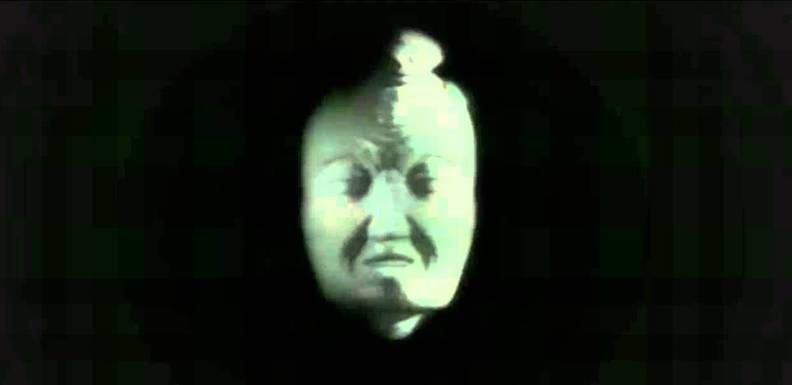
I’ve always been fascinated by logo design, even as a 2-year-old. (Seriously, I’d ask my parents to cut out logos I liked from newspapers and junk mail; my favorite at the time were Standard Brands paints, a company which hasn’t existed since 1995.) Even now, I love logo design, though these days I’m more drawn to video logos — be they for production companies or “idents,” the things that tell you what channel you’re watching. I’m not alone, and there are multiple channels on YouTube devoted to these. But today, I’d like to talk about just one logo — one you may not have seen before, unless you’re Russian. I’m talking about the infamous VID logo. (The company is known both as BND and ВИD based on its logo mark, but we’ll get into that soon.)
When you start digging into production logos, you’ll find that the most famous ones are generally thought of as “scary.” The guy who made Room 231, the documentary about alternate interpretations of Kubrick’s The Shining, Rodney Ascher, made a short film about one of the most famous: the Screen Gems logo, also known as “The S From Hell.”
Strangely, growing up, the Screen Gems logo never bothered me — the one that most freaked me out was the United Artists logo in front of the Pink Panther cartoons — I found it creepy, yet fascinating. But neither the S From Hell nor the creepy UA logo can hold a candle to the original VID logo.
The VID Logo
Most people reading this probably haven’t seen the VID logo. The logo opens with a line slowly drawn across the screen to a jarring jackhammer noise as a ball bounces on top. The ball falls off the line and into the white void, which triggers a five-note fanfare with concentric circles, and then a creepy mask appears with “ВИD” beneath it. The mask is of the Chinese Taoist philosopher Guo Xiang. That knot at the top of his head is supposed to be a three-footed toad, though it’s a bit hard to make out.
Though the logo was created by Andrey Rasbash in 1990, aside from the font design at the end, it feels much older. I assumed that the logo was from the late ’60s or 1970s when I first saw it. It’s bizarre and off-putting, and apparently even scared Russian children when it played before kids’ shows. Considering that I’m a 38-year-old man, and I find it creepy, I can only imagine what those poor kids felt.
The logo went through a number of re-creations over the years, as outlined by the Closing Logos Wiki, generally becoming less creepy over the years. Still, the original VID logo lasted until 2002.
Thanks to the internet, the original VID logo became a meme of sorts, and even on YouTube, you can find a number of homemade versions and edits of the logo.
Last year, VID changed their name to VIDgital, and drastically changed their logo, and — weirdly enough, it’s not that creepy anymore. Guo Xiang is smiling and the toad is clear. He looks more like your kindly, amphibian-loving grandpa.
Who Are VID Anyway?
VID, or in Russian ВИД, means “View,” and is an acronym for “Vzglyad i Druigye,” which means “Glance and Others.” VID was founded in 1987, and in addition to making television shows (including the Russian version of Wheel of Fortune, По́ле Чуде́сi), also publish a newspaper, Новый Взгляд.
On March 1, 1995, one of VID’s founders, Vlad Listyev, was shot to death at his apartment building. Though the murderers were never found, the fact that his body still had valuables and a large sum of cash on it implies that the murder was either political or business-related. Listyev had just left VID to head ORT, the main TV channel in Russia. One of his first decisions as ORT director was to put an end to advertising on the channel, in order to consolidate ad sales.
The main theories about who Listyev’s death are either that he was getting too popular and powerful among the Russian public, or in retribution for ending advertising on ORT, putting many ad agencies out of business.
Currently, VID is the biggest TV company in Russia, and makes a number of popular shows, including Последний герой, the Russian Survivor.
Kittysneezes is supported by readers like you. If you enjoy what you’ve read here, please consider supporting us on Patreon.